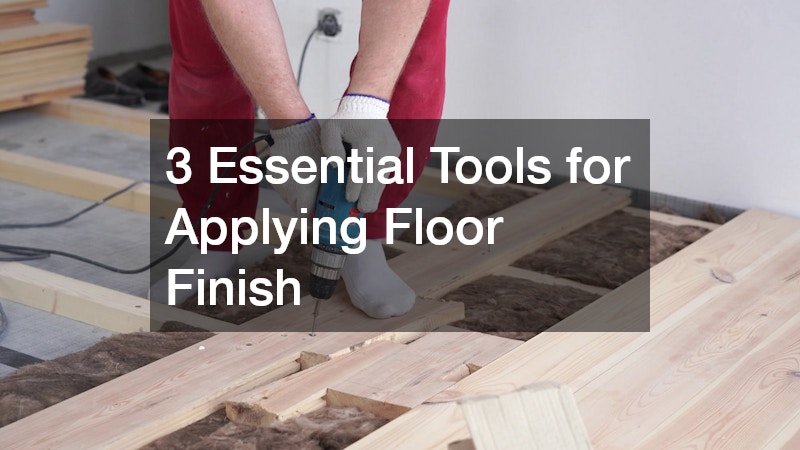Applying floor finish is a critical step in maintaining the durability and appearance of your flooring. Whether you’re a homeowner or a professional floor technician, understanding the essential tools for this task can make a significant difference in the outcome. In this article, we’ll explore the three most important tools you’ll need, address some common questions, and offer tips for achieving the best results.
1. What are the Must-Have Tools for Applying Floor Finish?
One of the fundamental tools in applying floor finish effectively is the high-quality floor finish applicator. This could be in the form of mops or specialized floor applicators designed to spread the finish evenly across the surface. Mops, especially microfiber ones, are preferred for their ability to hold and evenly distribute the finish without leaving streaks. Advanced floor applicators, which have become increasingly popular, often include features such as adjustable handles and precision flow control to cater to the specific needs of different flooring types.
Accompanying the applicator, a floor finish bucket is another must-have. These buckets are typically designed with ringer mechanisms to remove excess finish from the applicator, ensuring that the right amount is applied to the floor. The size and design of the bucket can vary, but a sturdy one with a measuring guide will allow for better control over the amount of finish used, reducing waste and ensuring an even coat. The material of the bucket should be resistant to chemicals, as many floor finishes have strong formulations.
Lastly, protective gear is crucial to ensuring safety during the application process. Gloves and masks protect against potential chemical exposure, while knee pads can prevent discomfort during long application sessions on hard surfaces. It’s also wise to consider using shoe covers or specific footwear to avoid contaminating the wet finish with dirt or dust. Besides improving the safety of the applicator, this gear helps maintain the integrity of the finish, reducing the likelihood of imperfections.
2. How Do I Choose the Right Applicator for Floor Finish?
Choosing the right applicator is essential and largely depends on the type of floor finish you are working with. For instance, water-based finishes require applicators that do not absorb moisture, such as synthetic fibers or foam pads. In contrast, oil-based finishes may be better applied with natural wool or lambswool applicators, which can hold more of the finish and allow it to spread smoothly. Understanding the finish’s composition is crucial to selecting the appropriate applicator.
Another important consideration is the type of flooring material. Some floors, like hardwood or laminated surfaces, may be more prone to visible streaking, necessitating the use of high-quality applicators that offer uniform distribution. Tile or stone floors can handle a more robust applicator but may require additional attention to detail around grout lines and uneven surfaces. Analyzing your floor type helps you decide whether a flat mop or a roller will provide the best application.
The size of the area you are working on also influences the choice of applicator. For large expanses, a wide applicator head with a long handle would speed up the process significantly. Conversely, smaller spaces or those with intricate layouts might benefit from a more compact applicator that offers better maneuverability. Ease of use should not be underestimated either; applicators that are comfortable to hold and easy to clean will greatly enhance the application experience.
3. What is the Role of Floor Finish Pads in Achieving a Smooth Finish?
Floor finish pads play a pivotal role in obtaining a smooth and professional finish on your flooring. These pads are specifically designed to level out the floor finish after it has been applied, ensuring an even and flawless surface. They work by gently buffing out applicator marks and distributing the finish consistently, which is essential for achieving that coveted glossy appearance.
The benefits of using floor finish pads extend to their versatility in handling a variety of floor finishes. Different pads are suited to different finishes: for example, softer pads are ideal for polishing final layers of finish, while more abrasive ones can be used early in the process to remove minor imperfections and prepare the surface. Knowing which pad to use at each stage of the application process can vastly improve the finish quality.
Applying floor finish doesn’t have to be a daunting task when you have the right tools at your disposal. Whether you’re just beginning or honing your skills, using proper applicators, choosing suitable pads, and understanding the essentials of floor finishing can make a world of difference. Equip yourself with these essential tools, and your floors will thank you with a beautiful shine and longer lifespan.




